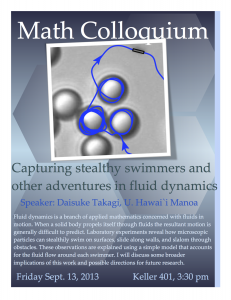On Friday Sept. 20, 2013 Prof. Jacek Brodzki of U. Southampton will give a colloquium lecture titled Subspaces of Groups and C^* Algebra Extensions.
The colloquium will take place at 3:30pm in Keller 401

While a great deal of information about the representation theory of a group is contained in its reduced C*-algebra, this is a very challenging object to study. One way to understand the structure of an operator algebra is to construct a C*-algebra extension, that is an exact sequence connecting the algebra under consideration to other algebras, the properties of which might already be known. In the case of groups, an ingenious way of constructing such extensions was proposed in the 1980s by Pimnser and Voiculescu, first for free groups, and then for groups acting on trees. This was a breakthrough result with many important consequences.
In this talk I will present a geometric picture that explains how extensions of this type arise, and how this unifying approach connects a number of important results of Lance, Pimsner and Voiculescu and others. A main ingredient in our construction is an operator algebra associated with a metric subspace of a discrete group, which plays the role of the reduced C*-algebra of a group. I will present several examples of how the interaction between the geometry of a subspace with that of the ambient group leads to interesting C*-algebra extensions. The talk will be aimed at non-specialists.

